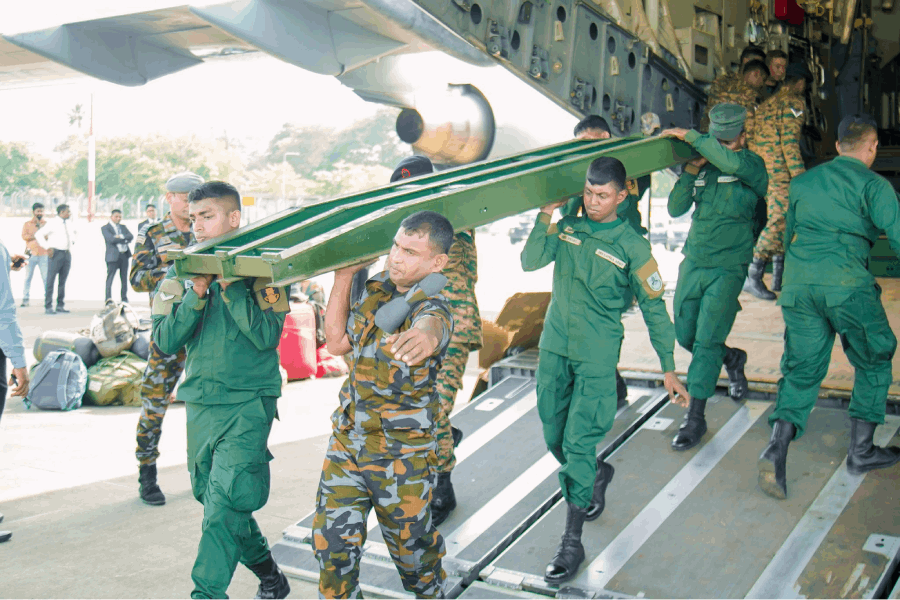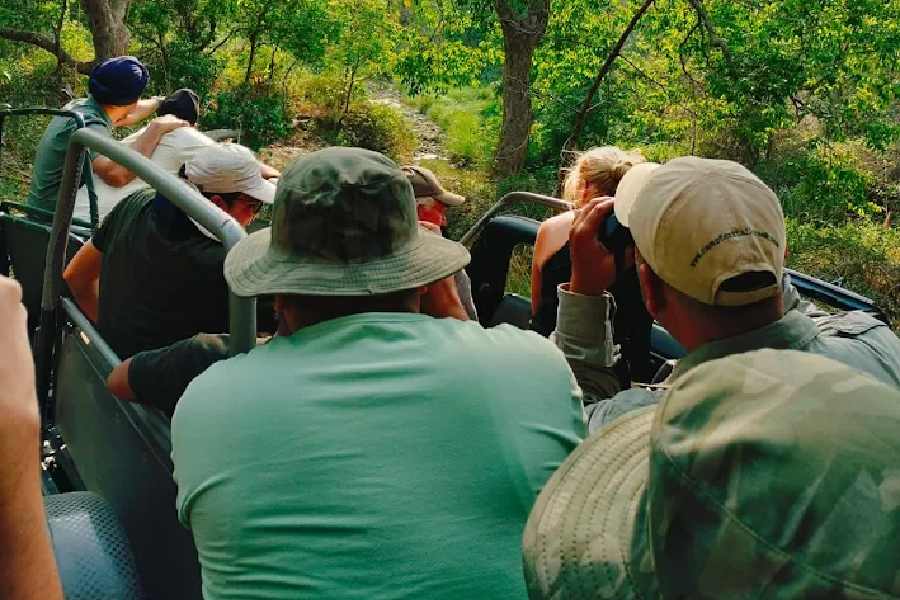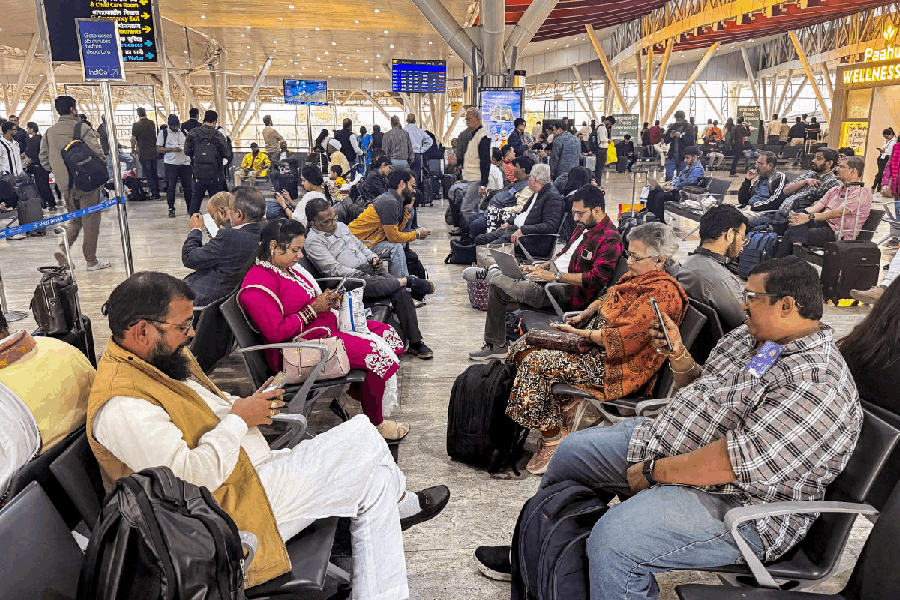 Friday, 05 December 2025
Friday, 05 December 2025
 Friday, 05 December 2025
Friday, 05 December 2025
Donald Trump won the "fastest finger first" contest hands down – announcing a dramatic India-Pakistan ceasefire before New Delhi had even cleared its throat.
For India, Trump’s claim to have brokered peace is awkward. Both Trump and Prime MInister Narendra Modi have strong egos and like to dominate the narrative. But with a key US trade deal in play, Modi can’t afford to publicly contradict Trump’s self-styled role as peacemaker. Still, with domestic hawks pushing Modi to project strength, India is scrambling to regain control of the story – and make clear it doesn’t take dictation from Washington.
The spin cycle kicked off at 5:35pm IST on Saturday, when Trump tweeted: “After a long night of talks mediated by the United States, I am pleased to announce that India and Pakistan have agreed to a FULL AND IMMEDIATE CEASEFIRE.” Just two minutes later, Secretary of State Marco Rubio followed up with a detailed statement, claiming credit for a flurry of calls with Modi, Sharif, the DGMOs, and the NSA chiefs of both countries.
India responded an hour later with its version. While Pakistan acknowledged a US role and praised Rubio – and what it said was Trump’s direct intervention – India insisted the ceasefire came from a direct hotline chat between the Directors General of Military Operations (DGMOs), initiated by Pakistan’s side.
Foreign secretary Vikram Misri, in a stiff televised statement, said the ceasefire was a "bilateral" decision made through military hotlines – no mention of Trump or Rubio. “It was agreed between them that both sides would stop all firing and military action on land,” Misri said, reinforcing India’s position: no third-party involvement in dealings with Pakistan.
India also denied Rubio’s claim that the two sides had agreed to meet for further talks at a neutral venue. That didn’t stop Trump from posting on Truth Social the next day that he wanted to “work with you both to see if after a ‘thousand years’ a solution can be arrived at concerning Kashmir”.
While Trump happily took credit for ending the fighting, he noticeably skipped over Pakistan’s well-established role in cross-border terrorism. “There was no pressure on the real source of the problem,” commented one ex-diplomat.
Trump wrapped up his Sunday post with a glowing shoutout: “God Bless the leadership of India and Pakistan on a job well done” and promised to “increase trade substantially with both of these great Nations.”
But how the ceasefire came about is just one twist in the ambiguous tale of the four-day war.
The New York Times said that after US Vice President J.D. Vance publicly washed his hands of the conflict, declaring it was “none of our business”, the Trump Administration decided to intervene due to fears the war “might quickly go nuclear”.
The Indian military says it landed solid hits – Air Marshal A.K. Bharti said Sunday airstrikes achieved “our objectives of decimating terrorist camps”. India also was said to have taken out military facilities deep inside Pakistan, including airbases in Nur Khan, Murid, and Rahim Yar Khan. India's missiles are said to have bypassed Pakistani radar and struck with precision.
Nur Khan (formerly Chaklala) is only 10km from Islamabad and close to Pakistan’s nuclear command headquarters.
Pakistan hit back by claiming it downed multiple Indian aircraft, including a Rafale – something New Delhi flatly denies though some reports suggest more than one Indian aircraft were lost in the encounter with the Pakistanis using Chinese anti-air-attack system. The system has a 150-km range which can be enhanced with certain types of drones. With this information, the enemy could lock on to the Rafales, making them easy targets.
India’s failure to first neutralise Pakistani avionics at the outset may have been costly. The textbook strategy is to take out their avionics before launching operations. But the army wanted to avoid hitting military targets and focus only on terrorist hubs, something one critic dubbed doing “vegetarian warfare”.
Later though, India appears to have learned the lesson and our forces reportedly destroyed avionics facilities including those at Lahore airport.
But deeper strategic concerns remain amid a dawning realisation that Rafales and F-16s are no match for Chinese technology which has seen what one analyst calls “awesome improvements”.
The US F-35s, though, are a match for the Chinese military gear. The US has been pushing India to buy F-35s as part of its trade talks with New Delhi.
Indeed, while India and Pakistan clashed, China quietly emerged as a big strategic winner. The brief conflict served as a live expo for Chinese arms. Pakistan deployed the Chengdu J-10C Vigorous Dragon fighter jet in combat for the first time, and reports suggest it held its own against India’s Rafales. Beijing is already amplifying that message across the Global South. Chengdu Aircraft Company’s stock jumped 40 per cent in just two trading days.
Pakistan, which sources over 80 per cent of its military hardware from China, effectively became Beijing’s showroom. Drones, air defence systems, and fighter jets – Chinese platforms went toe-to-toe with Western ones, and Beijing is already spinning the results in its favour.
“This is the most important global aspect here – this is the first time Chinese military equipment has been tested against top-notch western equipment,” said Sushant Singh, lecturer at South Asian Studies at Yale. With Chinese systems holding up well, Beijing is looking to expand arms sales in Africa, Central Asia and the Middle East – where buyers are looking for cheaper alternatives to pricey US or European weaponry.
India, meanwhile, sent its own important message to Pakistan. Its imported arsenal – French jets, Israeli drones, and US sensors – proved they could punch holes in Pakistan’s defences. The missiles targeted air defence radars and systems, exposing vulnerabilities in Pakistan’s Chinese-made HQ-9 air defence network, which analysts say is significantly weaker than India’s Russian-built S-400s.
Now, as the dust settles, the war of words is in full swing. Social media has lit up with nationalist fury. “Why has PM Modi fallen to US pressure instead of bashing on and punishing Pakistan more?” asked one user. Military analyst Ajai Shukla echoed the mood: “Pakistan has been let off the hook again! There was no cause for a ceasefire, nor any urgency to declare one once hostilities had commenced.”
Former Indian Army Chief Gen. Ved Malik was similarly sceptical, warning that calling time too early could embolden Pakistan-based militants. “We have left India’s future history to ask what politico-strategic advantages, if any, were gained after its kinetic and post-kinetic actions following Pakistan’s horrific terror strike in Pahalgam.”
In the end, whether the truce came via Washington’s back channels or a military hotline between India and Pakistan, the bigger question now is: will it hold? And what happens if there’s another attack? Already, India is accusing Pakistan of fresh violations. Modi, under pressure to look tough, warned on Sunday that any hostile action would be met with “devastating” consequences.







